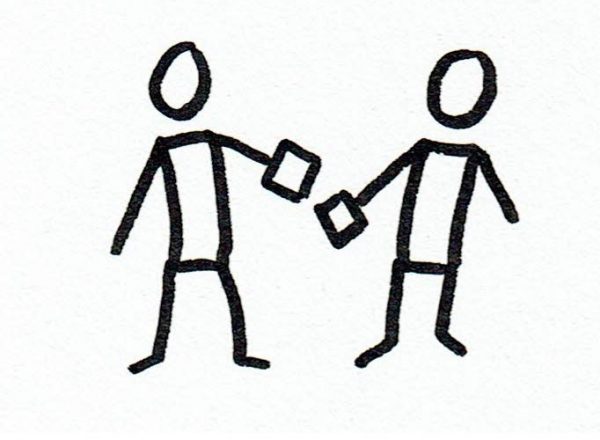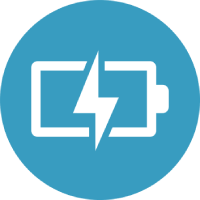
Energizers
Energizers are there in many forms and shapes. They help you get peoples attention back, let them relax after heavy discussions or give them a certain insight. They are often used at the start of a session to get peoples attention or during a session to get the energy back in the room. The following cards show you some example energizers and how they can help you and your team.
This energizer activates both sides of the brain. It will take you roughly 5 minutes.
- Ask people to form pairs and stand opposite to each other
- Let the pairs count to three jointly: one says 1, two says 2, one says 3
- After a while replace 1 with a clap and continue
- After a while replace 2 with a stomp
- After a while replace 3 with a pat on the shoulder
- Evaluate. What went best?
You can also replace the counts with other movements that you can come up with, like a high five, or a jump. Since the counting is done by the ratio side of the brain and the actions are done by the creative side of the brain, this energizer activates both sides of the brain.
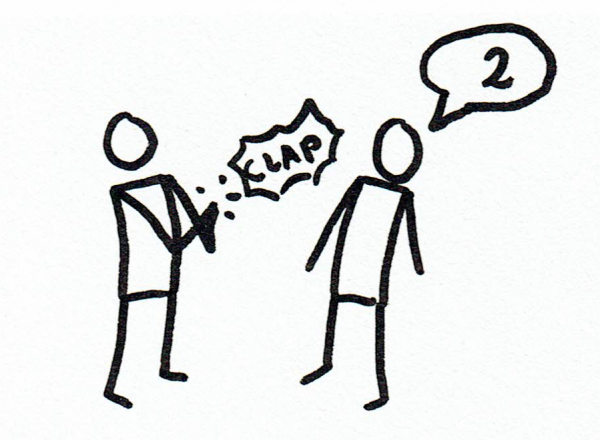
This energizer shows you that your point of view matters when you form your opinion. It will take you about 2 minutes.
- Let people point their finger to the ceiling and turn it clockwise
- Now while turning let them lower the finger, keeping it upright
- When the finger is low enough, look down upon your finger. It is turning anti-clockwise.
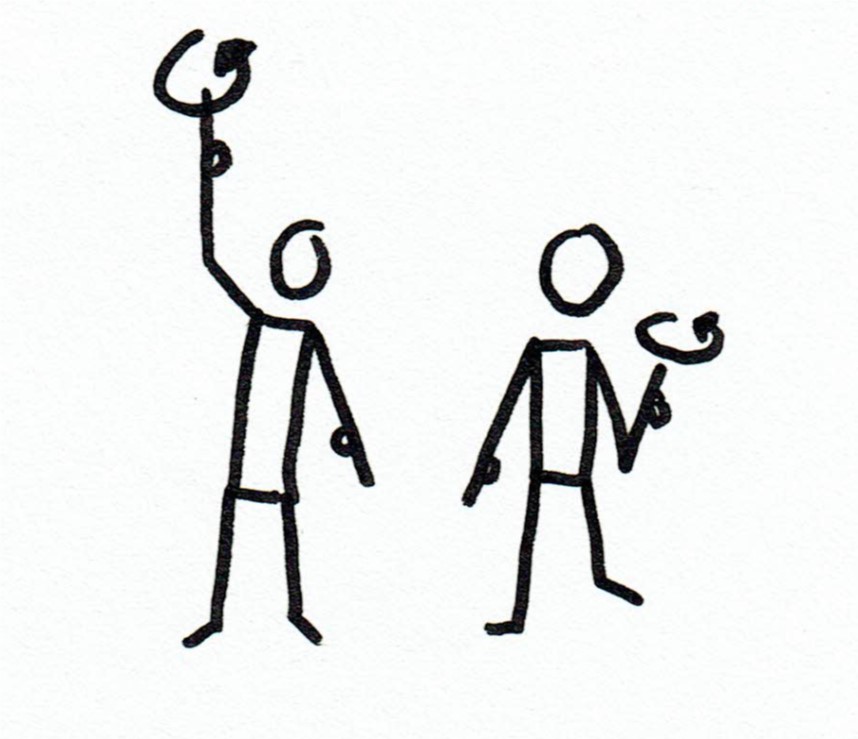
This exercise is really great with bigger groups. It shows what happens when one person tries to control a big group of people. And when people try to exactly follow the movements of someone that is following the movements of someone else. It will surely bring a lot of energy and laughter to the group and shows the downfall of non-self-steering teams.
- Ask for a volunteer to stand in the middle of the room. Tell the group that this is the most important person, the center of the universe.
- Ask that person to stand with arms stretched to the sides and hands up like two stop signs
- Ask two more volunteers. Ask them to stand in the same position as the center person but their head is facing (almost toughing) the hands of the first person
- Ask the two volunteers to mimic the moves of the center person, but their heads should keep facing the hands of the center person
- Now ask the center person to slowly move his/her arms. The center person should stay in the same location, the two volunteers can move from their spot if that is required to follow the movement of the center person
- Next you can add four more volunteers to stand in the same position as the others but facing the hands of the first two volunteers. Again ask the center person to move and see what happens when the group grows.
- Add 8 more volunteers
- Add until all people stand in the same position and have a hand to face
- Debrief with the whole group. What did you notice, how did it feel for you. Also check with the center person how it felt and what was noticed.
This is a nice energizer to see what happens when one person tries to control a big group and the group simply follows without really thinking for themselves.
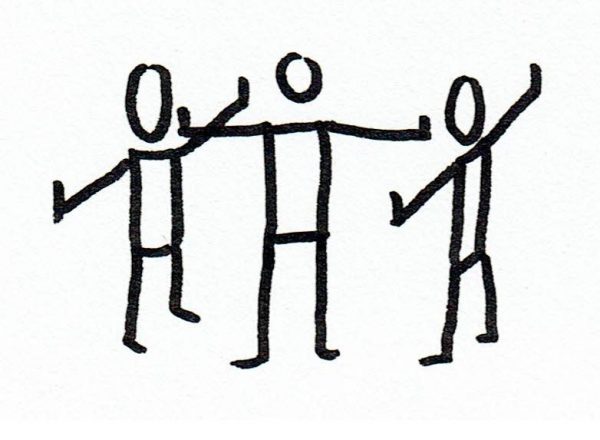
Triangles (the power of self-organizing)
This exercise is great with bigger groups. It shows the power of self-organization of people. The task at hand would have taken one person way longer than it does the whole group, no matter the size.
- With a group of people, ask each person to keep two other persons in mind without showing who it is
- Ask everyone in the group to form an equilateral triangle with the two persons they had in mind by walking around in the room until the triangle has formed
- After some minutes people will stop moving and have completed the task
- Debrief with the whole group. What did you notice, how did it go?
- Additionally you can move one person from the whole group and ask them to rearrange themselves again so that the triangles match again. You will notice that this takes less time than at start
This is a nice energizer to show the power of having the same goal with a group of people working independently.
This energizer will help a group get to know each other by defining the connections that are already there.
- The facilitator states his name and tells something about himself. He continues until a participants rises because he has something in common with the facilitator. The facilitator finishes his sentence and sits down.
- The participant then starts with:”I am … and I connect to -facilitator name- because …” stating the connection.
- The participant continues to talk about himself until the next person rises.
- Continue until all people have introduced themselves.
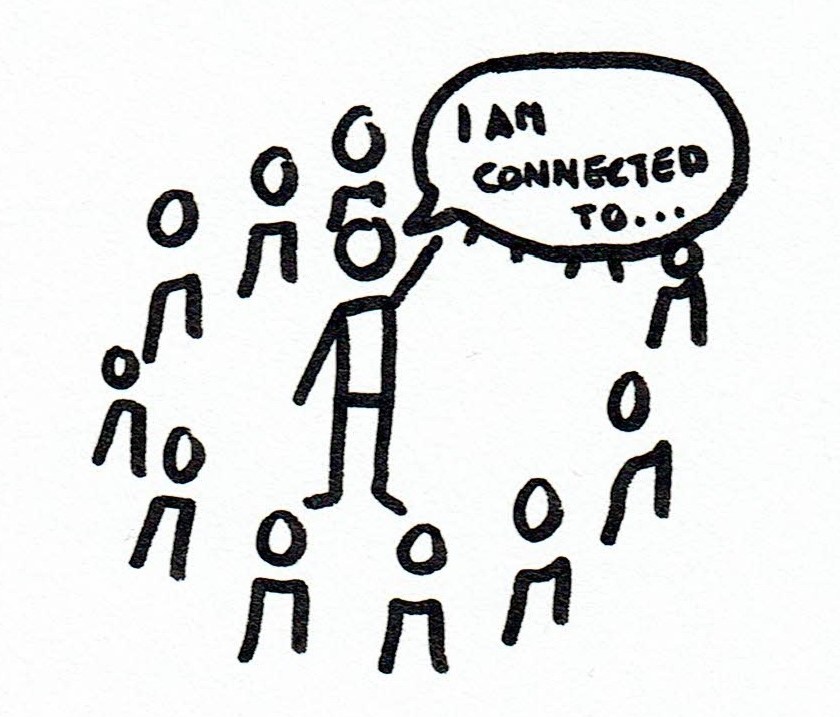
A check-in question is mostly used to get people’s attention at the start of a session. To have them not only physically but also mentally present. All participants answer the question one by one listening to each other’s answers. Some typical check-in questions:
-
-
- One word that describes your day so far.
- What’s one thing that makes you unique.
- One word intention of today’s meeting.
-
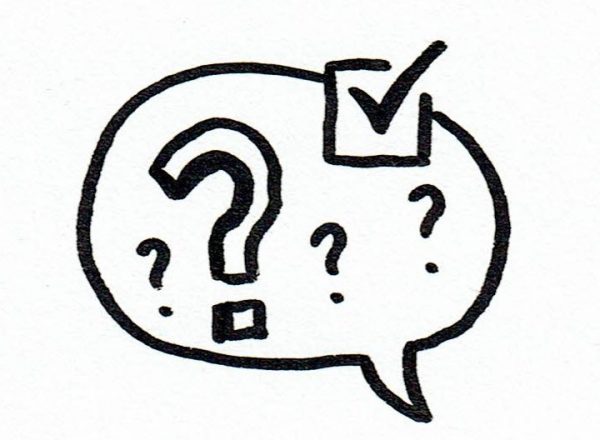
With this energizer, people are challenge to place themselves in the shoes of someone else and think creatively
- Ask each person to write one word that describes them best on a post-it.
- In pairs discuss why your word describes you best.
- Now mingle notes e.g. by passing them until the music stops.
- Look at the word on your paper.
- In pairs discuss why this word describes you.
This exercise forces people to take a different view when explaining why someone else’s word describes them.
